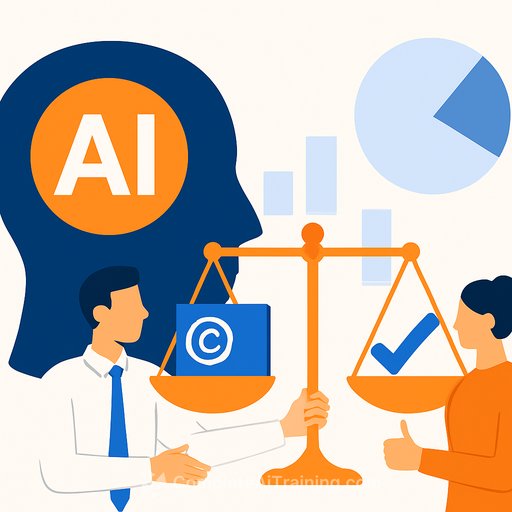Spotify's AI Guardrails: What Creatives Need To Know Now
Over the past 12 months, Spotify says it has removed more than 75 million spammy tracks. That's a signal, not a footnote. As generative AI floods feeds with cheap audio, the platform is tightening rules to protect artists, preserve royalty pools, and keep listeners from being deceived.
On 25 September 2025, Spotify rolled out a stricter playbook: tougher impersonation rules, a next-gen spam engine, and mandatory AI transparency through metadata credits. In a noisy ecosystem where bad actors can churn out algorithmic slop, the message is clear-create, don't manipulate.
What changed on September 25, 2025
Three policy upgrades landed at once: impersonation control, spam prevention at scale, and AI disclosure via standardized credits. Spotify is drawing a hard line against voice cloning without consent, engineered spam uploads, and opaque production methods.
The three pillars (and how they affect you)
1) Impersonation control
Voice cloning and artist impersonation now require explicit consent. A new content mismatch system lets musicians flag fraudulent uploads pre-release. The premise is simple: cloning an artist's voice without approval exploits identity and undermines the work.
2) Spam prevention
A new filtering engine looks for mass uploads, duplicate audio, metadata abuse, and ultra-short tracks engineered to inflate streams. Rollout is gradual to avoid crushing legitimate creators, but manipulative patterns get tagged and suppressed.
3) AI disclosure
Spotify is backing a DDEX metadata standard to label how AI was used-vocals, instrumentation, post-production. This isn't a penalty; it's accountability. Disclosure builds trust with fans, curators, and rightsholders.
Why this matters for creatives
Scale changes the incentive structure. With an estimated 100 million tracks in its catalog, removing 75 million spammy uploads in a year shows the scope of the problem. A single podcast startup can flood the zone with 3,000 AI-generated episodes weekly. Even the most viral "rabbits on trampoline" clip can fool the crowd.
Left unchecked, spam siphons royalties, clogs recommendations, and buries genuine work. Spotify says flagged accounts and tracks stop getting recommended-protecting attention and payouts for artists playing by the rules.
Zero-cost creation cuts both ways
Generative AI can output hundreds of tracks overnight. Quantity no longer proves value. Spotify says engagement with AI-generated music is currently minimal and not affecting human artists' revenue in a meaningful way. Still, algorithms amplify frequency and scale-the exact strengths of automated output-so clear enforcement matters.
The legal gray zone
Platform rules don't settle ownership. Contracts between artists, labels, and distributors set terms for masters, compositions, and AI rights-and many of those terms are still unclear. Questions remain: Can a label waive your right to block voice cloning? Can compositions be used as training data without breach?
Spotify notes that artists contract with labels and aggregators, not the platform. Until legal standards catch up, protection may depend on the platform you publish to and the clauses in your deals.
Action plan: protect your work and your revenue
- Get explicit consent for any voice model use-on paper. If your voice is requested, define terms, scope, and revocation rights.
- Disclose AI use in your credits. Adopt DDEX fields for vocals, instrumentation, and post-production. See the standard at ddex.net.
- Avoid spam triggers: mass dumps of near-identical tracks, duplicate audio, keyword-stuffed titles, or ultra-short "stream bait."
- Audit your catalog. Use pre-release checks to catch impersonations or mismatches. Keep stems, timestamps, and model/version notes for provenance.
- Tighten contracts. Add clauses for likeness/voice rights and restrictions on training data. Consult counsel before signing away identity or reuse rights.
- Control discovery. Pitch editorial, build owned playlists, and engage your core audience so algorithms aren't your only lifeline.
- Know the rules you're publishing under. Review Spotify's policies at spotify.com/legal/platform-rules.
Spotify's stance, in plain terms
Spammy content gets tagged and de-recommended to protect legitimate artists' attention and payouts. Voice cloning needs consent. AI use should be transparent. Spotify says it will keep adjusting to make the ecosystem fairer for artists, rightsholders, and listeners.
Trust will decide what wins
Filters are table stakes. The endgame is keeping human creativity visible and valuable in a sea of infinite content. Discovery needs to prioritize quality and intent, not sheer output. Provenance-clear credits and verifiable process-may become the new currency of belief.
Use AI as a creative aid, not a mask. Make your process transparent, protect your identity, and focus on work that can't be faked: taste, story, and point of view. That's what keeps fans loyal when everything starts to sound the same.
Skill up without the spam traps
If you're building AI into your creative workflow and want ethical, practical training, explore curated options by job at Complete AI Training.
Your membership also unlocks:






